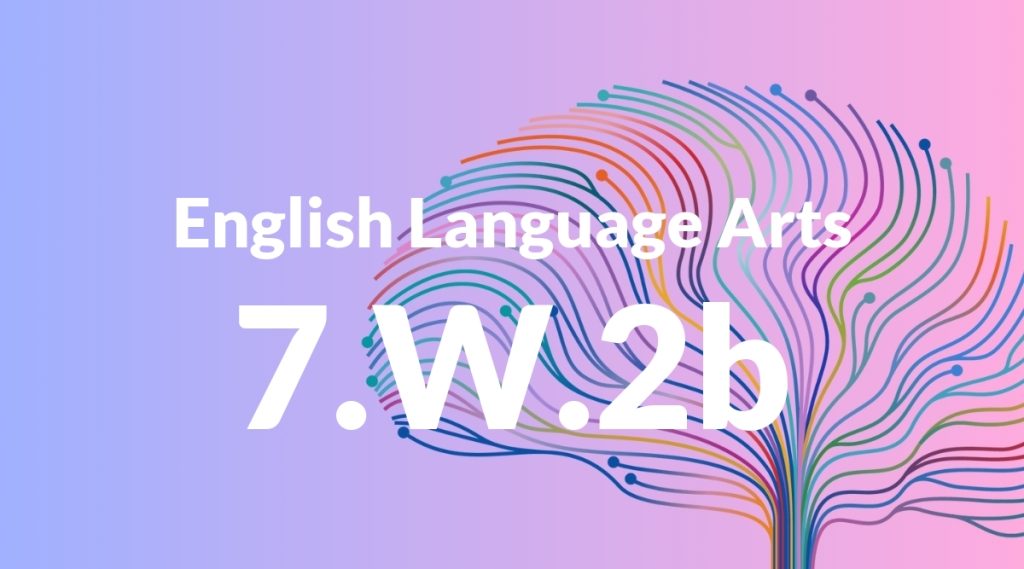Standard: 7.W.2b – Develop the topic with relevant facts, definitions, concrete details, quotations, or other information and examples.
Grade level: Grade 7
Subject: English Language Arts
Domain: Writing
Teacher Overview
This standard emphasizes the importance of developing a topic thoroughly with relevant and varied information. It is crucial for helping students learn to support their ideas with evidence, which is a fundamental skill in writing across all subjects. Students need to understand basic paragraph structure and have experience with finding and using reliable sources of information. They should also be able to distinguish between relevant and irrelevant details.
Mastering this standard prepares students for more advanced writing tasks, such as constructing well-supported arguments and conducting in-depth research projects.
Common Misconception 1
Some students may think that more information is always better. However, adding irrelevant details can confuse the reader and weaken the main argument. It’s important to teach students how to select only the most pertinent information.
Intervention 1
Use graphic organizers to help students map out their ideas and ensure that all supporting details are directly related to the main topic. Conduct peer review sessions where students can give and receive feedback on the relevance of their details.
Common Misconception 2
Another common misconception is that quotations alone are enough to develop a topic. While quotations can provide strong support, they need to be explained and connected to the main idea to be effective.
Intervention 2
Model the process of integrating quotations into writing by showing examples of how to introduce, explain, and connect quotations to the main topic. Provide practice opportunities with immediate feedback.
Prerequisite Knowledge
Students should be familiar with basic paragraph structure, including topic sentences and supporting details. They should also have experience with finding and using reliable sources of information.
Subsequent Knowledge
After mastering this standard, students will be able to create more complex and nuanced pieces of writing, such as argumentative essays and research projects, where they can effectively integrate multiple sources and types of evidence.
Instructional Activities
- Have students write a short research paper on a topic of their choice, ensuring they include relevant facts, definitions, and quotations.
- Conduct a workshop on how to find and evaluate reliable sources of information.
- Use graphic organizers to help students plan out their writing and ensure all details are relevant.
- Create a peer review activity where students give feedback on each other’s use of supporting details.
- Assign a biography project where students must use quotations and concrete details to develop their subject.




